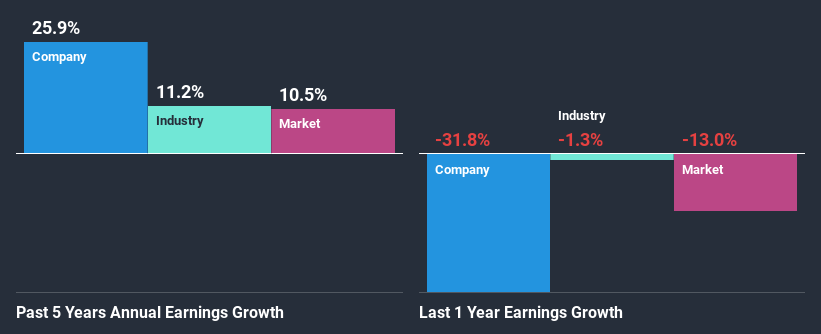Is Weakness In Avast Plc (LON:AVST) Stock A Sign That The Market Could be Wrong Given Its Strong Financial Prospects?
With its stock down 9.0% over the past month, it is easy to disregard Avast (LON:AVST). However, stock prices are usually driven by a company’s financial performance over the long term, which in this case looks quite promising. Specifically, we decided to study Avast's ROE in this article.
ROE or return on equity is a useful tool to assess how effectively a company can generate returns on the investment it received from its shareholders. In short, ROE shows the profit each dollar generates with respect to its shareholder investments.
Check out our latest analysis for Avast
How Do You Calculate Return On Equity?
The formula for ROE is:
Return on Equity = Net Profit (from continuing operations) ÷ Shareholders' Equity
So, based on the above formula, the ROE for Avast is:
14% = US$170m ÷ US$1.2b (Based on the trailing twelve months to December 2020).
The 'return' is the income the business earned over the last year. One way to conceptualize this is that for each £1 of shareholders' capital it has, the company made £0.14 in profit.
What Is The Relationship Between ROE And Earnings Growth?
We have already established that ROE serves as an efficient profit-generating gauge for a company's future earnings. Based on how much of its profits the company chooses to reinvest or "retain", we are then able to evaluate a company's future ability to generate profits. Generally speaking, other things being equal, firms with a high return on equity and profit retention, have a higher growth rate than firms that don’t share these attributes.
Avast's Earnings Growth And 14% ROE
To begin with, Avast seems to have a respectable ROE. Further, the company's ROE compares quite favorably to the industry average of 8.3%. Probably as a result of this, Avast was able to see an impressive net income growth of 26% over the last five years. We believe that there might also be other aspects that are positively influencing the company's earnings growth. Such as - high earnings retention or an efficient management in place.
Next, on comparing with the industry net income growth, we found that Avast's growth is quite high when compared to the industry average growth of 11% in the same period, which is great to see.
Earnings growth is a huge factor in stock valuation. What investors need to determine next is if the expected earnings growth, or the lack of it, is already built into the share price. By doing so, they will have an idea if the stock is headed into clear blue waters or if swampy waters await. Has the market priced in the future outlook for AVST? You can find out in our latest intrinsic value infographic research report.
Is Avast Efficiently Re-investing Its Profits?
Avast's significant three-year median payout ratio of 60% (where it is retaining only 40% of its income) suggests that the company has been able to achieve a high growth in earnings despite returning most of its income to shareholders.
Along with seeing a growth in earnings, Avast only recently started paying dividends. Its quite possible that the company was looking to impress its shareholders. Upon studying the latest analysts' consensus data, we found that the company's future payout ratio is expected to drop to 46% over the next three years. The fact that the company's ROE is expected to rise to 27% over the same period is explained by the drop in the payout ratio.
Summary
In total, we are pretty happy with Avast's performance. Especially the high ROE, Which has contributed to the impressive growth seen in earnings. Despite the company reinvesting only a small portion of its profits, it still has managed to grow its earnings so that is appreciable. With that said, the latest industry analyst forecasts reveal that the company's earnings growth is expected to slow down. To know more about the latest analysts predictions for the company, check out this visualization of analyst forecasts for the company.
This article by Simply Wall St is general in nature. It does not constitute a recommendation to buy or sell any stock, and does not take account of your objectives, or your financial situation. We aim to bring you long-term focused analysis driven by fundamental data. Note that our analysis may not factor in the latest price-sensitive company announcements or qualitative material. Simply Wall St has no position in any stocks mentioned.
Have feedback on this article? Concerned about the content? Get in touch with us directly. Alternatively, email editorial-team (at) simplywallst.com.

